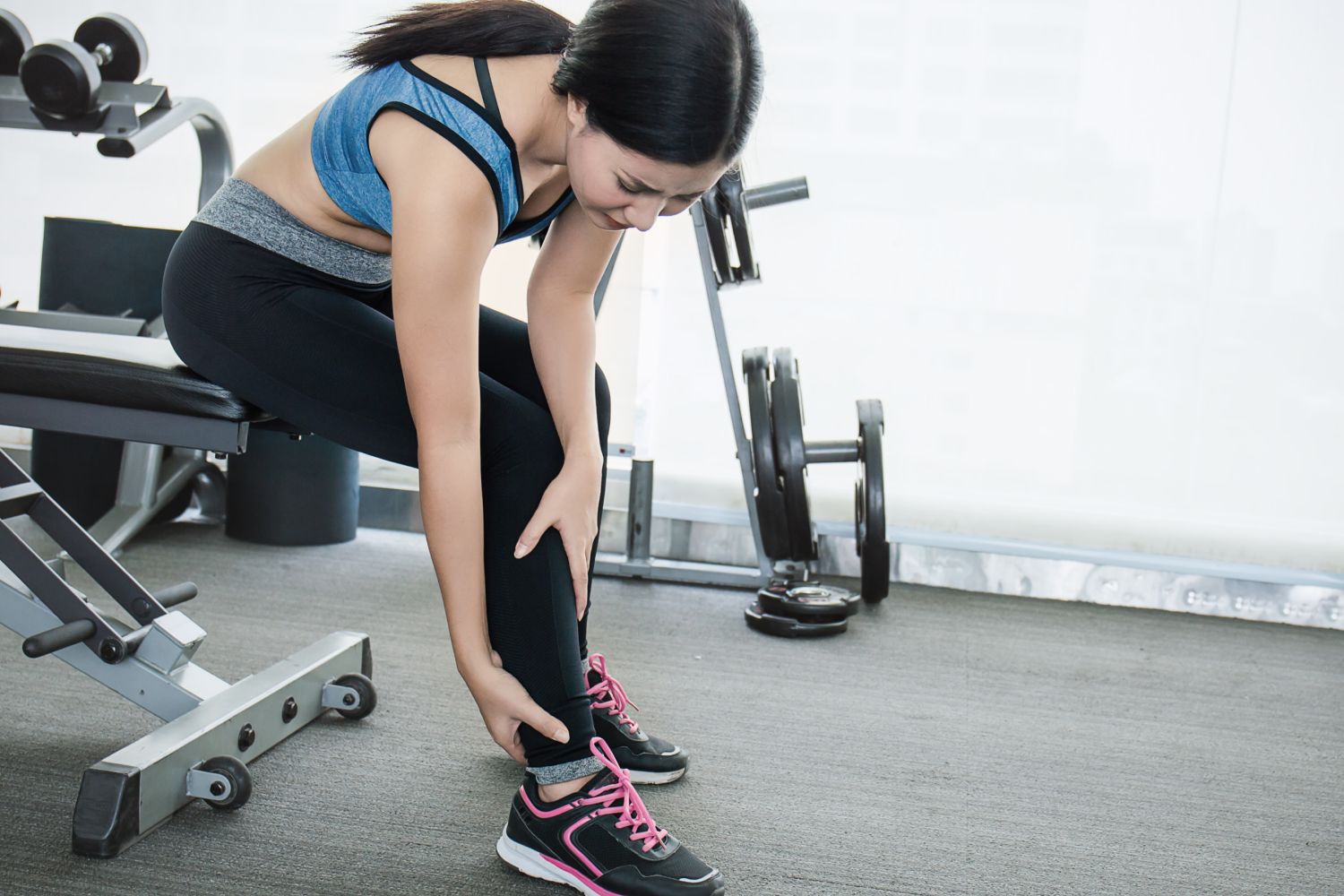Medically Reviewed By | Dr. Kate Panawash, PT, NCS, DPT
Are shin splints disrupting your active routine? Shin splints refer to the pain felt along the shinbone, typically caused by rapid increases in intensity of physical activities like running or extreme obstacle courses.
In this article, discover effective recovery methods, particularly through targeted activities like stretches and exercises, to alleviate discomfort and aid in shin splint recovery.
What Causes Shin Splints?
You might be wondering what triggers shin splints, especially among runners and extreme sports enthusiasts. Shin splints often occur due to overuse or repetitive stress on the structures that attach to the bones in the lower leg or shin.
Engaging in high-impact activities, sudden increases in workout intensity, improper footwear, or running on hard surfaces contribute to this condition. Symptoms of shin splints include a dull, aching pain along the inner part of the shin, tenderness, and swelling.
Recognizing these signs early is crucial to prevent exacerbation and seek appropriate recovery strategies. However, seeking professional medical advice is paramount for accurate diagnosis and tailored treatment plans to address shin splint discomfort effectively.
How Can Improper Footwear Cause Shin Splints?
Improper footwear plays a pivotal role in the development of shin splints. Shoes lacking proper support or those that don't suit an individual's foot mechanics can significantly contribute to this condition.
Insufficient cushioning or worn-out footwear fails to absorb the impact of high-impact activities, transferring excessive stress to the lower leg. Similarly, shoes lacking stability or adequate arch support can lead to poor foot mechanics, altering the distribution of forces during physical activities like running or extreme obstacle courses.
This improper distribution of force can strain the muscles and tendons surrounding the shinbone, exacerbating the risk of shin splints. Choosing appropriate footwear tailored to individual foot structure and activity level is crucial in preventing shin splints and maintaining lower limb health during physical exertion. “Seek out a professional at a local running store, they are experienced in finding a shoe that meets your unique gait and foot structure,” notes Katelyn Panawash, Doctor of Physical Therapy (DPT) and Board Certified Neurologic Clinical Specialist (NCS).
How Do Stretches Contribute to Shin Splint Recovery?
Curating a dedicated stretching routine plays a pivotal role in alleviating shin splint discomfort and aiding in recovery. Stretching exercises aim to target the muscles, tendons, and connective tissues surrounding the shins, fostering flexibility and relieving tension. Incorporating specific stretches tailored for shin splints helps mitigate pain by reducing stress on the affected area.
Dynamic stretches like calf stretches, toe taps, heel walks, and ankle circles are effective in enhancing blood circulation and promoting muscle flexibility in the lower legs. These stretches specifically target areas prone to shin splint discomfort, aiding in muscle recovery and reducing tightness.
“If you think you have shin splints, seeking out an evaluation by a Physical Therapist can help determine exactly what combination of activities will be most beneficial and effective for you,” notes Panawash.
Moreover, consistent stretching aids in improving the overall flexibility of the lower limbs, reducing the strain on the shinbone during physical activities.
Remember, while stretches are beneficial in recovery, moderation is key. Overstretching or incorrect technique may exacerbate the condition.
Pairing stretches with Incrediwearknee sleeves can offer added support during recovery from shin splints. However, it's essential to consult with a healthcare professional or physical therapist to ensure a tailored stretching regimen that is aligned with individual recovery needs.
Which Stretches Aid in Effective Shin Splint Recovery?
Toe Taps
Begin by sitting comfortably with your legs extended. Flex your toes upward and gently tap them on the ground for 20-30 seconds.
Alternate between tapping your toes up and down, targeting the muscles surrounding the shins. This exercise promotes flexibility and blood flow, aiding in shin splint recovery.
Heel Walks
Walk on your heels for about 20-30 seconds, lifting your toes off the ground while keeping your heels planted. “This stretch targets the calves and Achilles tendons. The muscles on the front of the lower leg are constantly contracted, working to keep your toes up and strengthening muscles associated with shin splints,” says Panawash.
Calf Stretches
Stand facing a wall and place your hands against it. Step one foot back and press the heel down while keeping the leg straight.
Lean forward slightly, feeling the stretch in the calf muscle of the back leg. Hold for 20-30 seconds and switch legs. Repeat two to three times on each leg. Calf stretches help reduce tension in the lower leg.
Ankle Circles
Sit or stand comfortably and raise one foot off the ground. Rotate the foot at the ankle in clockwise and counterclockwise circles for 15-20 seconds each. Perform this exercise on both legs. Ankle circles improve ankle flexibility and alleviate stiffness, benefiting shin splint recovery.
Towel Stretch
Sit on the floor with your legs extended. Loop a towel around the ball of your foot and gently pull the towel towards you, feeling the stretch along the calf muscles.
Hold for 20-30 seconds, then switch legs. This stretch helps loosen tight calf muscles.
Shin Splint Stretch
Sit on the floor with your legs extended. Gently flex your toes and bring them toward your body, feeling activating in the muscles along the front of your shins. Hold this position for 20-30 seconds, then release.
Repeat this contraction two to three times. This activity specifically targets the muscles in the front of the shin.
Soleus Stretch
Stand facing a wall, about an arm's length away. Place your hands on the wall at shoulder height. Step one foot back, keeping it flat on the ground with the knee slightly bent.
Keep the other leg forward, bent at the knee. Lean forward into the wall until you feel a gentle stretch in the lower calf of the back leg. Hold this position for 20-30 seconds and switch legs.
This stretch targets the deeper calf muscles, contributing to shin splint recovery by reducing tension in the calf area.
Wrapping Up
A consistent stretching and targeted strengthening regimen tailored for shin splint recovery can significantly alleviate discomfort and aid in the healing process. These activities — toe taps, heel walks, calf stretches, ankle circles, and others — target key muscles, promoting flexibility and reducing tension in the lower legs.
However, while stretches are beneficial, they should be performed cautiously and in moderation to avoid exacerbating the condition.
Pairing these stretches with Incrediwear knee sleeves provides added support during the recovery phase. It's crucial to remember that while these techniques aid in recovery, they complement rather than substitute proper medical treatment or advice.
Seeking guidance from healthcare professionals or physical therapists ensures a tailored recovery plan aligned with individual needs. Embrace these activities as part of your holistic approach to shin splint recovery, prioritizing consistency, moderation, and personalized care for optimal healing and lower limb wellness.
Sources:
Running injuries. A review of the epidemiological literature | NIH
The prevention of shin splints in sports: A systematic review of literature | Research Gate
Read more

Medically Reviewed By | Dr. Kate Panawash, PT, NCS, DPT Football, known for its physical intensity and high-impact plays, poses inherent risks of injuries to players at all levels, from high school...

Medically Reviewed By | Dr. Kate Panawash, PT, NCS, DPT Football, known for its physical intensity and high-impact plays, poses inherent risks of injuries to players at all levels, from high school...






Leave a comment
All comments are moderated before being published.
This site is protected by hCaptcha and the hCaptcha Privacy Policy and Terms of Service apply.